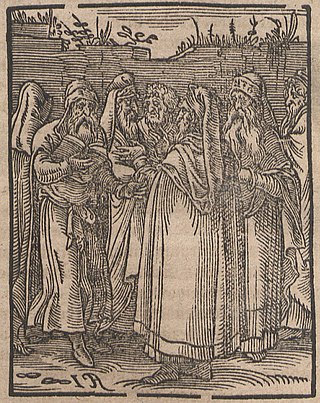
Kabbalah or Qabalah is an esoteric method, discipline and school of thought in Jewish mysticism. A traditional Kabbalist is called a Mekubbal. The definition of Kabbalah varies according to the tradition and aims of those following it, from its origin in medieval Judaism to its later adaptations in Western esotericism. Jewish Kabbalah is a set of esoteric teachings meant to explain the relationship between the unchanging, eternal God—the mysterious Ein Sof —and the mortal, finite universe. It forms the foundation of mystical religious interpretations within Judaism.
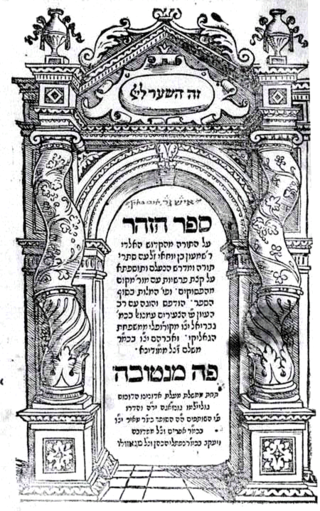
The Zohar is a foundational work of Kabbalistic literature. It is a group of books including commentary on the mystical aspects of the Torah and scriptural interpretations as well as material on mysticism, mythical cosmogony, and mystical psychology. The Zohar contains discussions of the nature of God, the origin and structure of the universe, the nature of souls, redemption, the relationship of Ego to Darkness and "true self" to "The Light of God".

Rabbinic literature, in its broadest sense, is the entire spectrum of rabbinic writings throughout Jewish history. However, the term often refers specifically to literature from the Talmudic era, as opposed to medieval and modern rabbinic writing, and thus corresponds with the Hebrew term Sifrut Chazal. This more specific sense of "Rabbinic literature"—referring to the Talmudim, Midrash, and related writings, but hardly ever to later texts—is how the term is generally intended when used in contemporary academic writing. The terms mefareshim and parshanim (commentaries/commentators) almost always refer to later, post-Talmudic writers of rabbinic glosses on Biblical and Talmudic texts.

Abraham ben Samuel Abulafia was the founder of the school of "Prophetic Kabbalah". He was born in Zaragoza, Spain, in 1240, and is assumed to have died sometime after 1291 following a stay on the small and windswept island of Comino.
The Dardaim or Dor Daim, are adherents of the Dor Deah movement in Orthodox Judaism. That movement took its name in 1912 in Yemen under Rabbi Yiḥyah Qafiḥ, and had its own network of synagogues and schools, although, in actuality, the movement existed long before that name had been coined for it. According to ethnographer and historian, Shelomo Dov Goitein, author and historiographer, Hayyim Habshush had been a member of this movement before it had been given the name Dor Deah, writing, “...He and his friends, partly under European influence, but driven mainly by developments among the Yemenite Jews themselves, formed a group who ardently opposed all those forces of mysticism, superstition and fatalism which were then so prevalent in the country and strove for exact knowledge and independent thought, and the application of both to life.” It was only some years later, when Rabbi Yihya Qafih became the headmaster of the new Jewish school in Sana'a built by the Ottoman Turks and where he wanted to introduce a new curriculum in the school whereby boys would also learn arithmetic and the rudiments of the Arabic and Turkish languages that Rabbi Yihya Yitzhak Halevi gave to Rabbi Qafih's movement the name Daradʻah, a word which is an Arabic broken plural made-up of the Hebrew words Dör Deʻoh, and which means "Generation of Knowledge."
Bahir or Sefer HaBahir is an anonymous mystical work, attributed to a 1st-century rabbinic sage Nehunya ben HaKanah because it begins with the words, "R. Nehunya ben HaKanah said". It is also known as Midrash of Rabbi Nehunya ben HaKanahמִדְרָשׁ רַבִּי נְחוּנְיָא בֶּן הַקָּנָה.
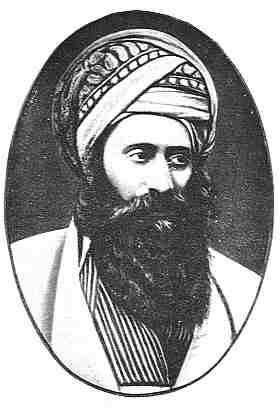
Yosef Hayim was a leading Baghdadi hakham, authority on halakha, and Master Kabbalist. He is best known as author of the work on halakhaBen Ish Ḥai, a collection of the laws of everyday life interspersed with mystical insights and customs, addressed to the masses and arranged by the weekly Torah portion.

Sefirot, meaning emanations, are the 10 attributes/emanations in Kabbalah, through which Ein Sof reveals itself and continuously creates both the physical realm and the chain of higher metaphysical realms. The term is alternatively transliterated into English as sephirot/sephiroth, singular sefirah/sephirah, etc.
Beit El Kabbalist yeshiva is a center of kabbalistic study in Jerusalem. Today it consists of two buildings, one in the Ruhama neighbourhood of West Jerusalem, built in 1948, and another in Old City’s Jewish Quarter, built in 1974.
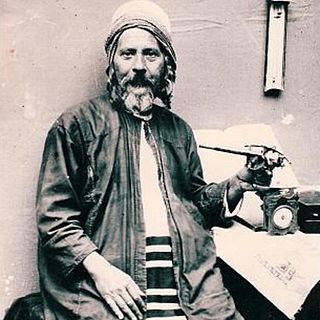
Yiḥyah Qafiḥ (1850–1931), known also by his term of endearment "Ha-Yashish", served as the Chief Rabbi of Sana'a, Yemen in the late nineteenth and early twentieth centuries. He was one of the foremost rabbinical scholars in Sana'a during that period, and one who advocated many reforms in Jewish education. Besides being learned in astronomy and in the metaphysical science of rabbinic astrology, as well as in Jewish classical literature which he taught to his young students.
Lurianic Kabbalah is a school of kabbalah named after Isaac Luria (1534–1572), the Jewish rabbi who developed it. Lurianic Kabbalah gave a seminal new account of Kabbalistic thought that its followers synthesised with, and read into, the earlier Kabbalah of the Zohar that had disseminated in Medieval circles.
Reuvein Margolies, was an Israeli author, Talmudic scholar and head of the Rambam library.
Practical Kabbalah in historical Judaism, is a branch of the Jewish mystical tradition that concerns the use of magic. It was considered permitted white magic by its practitioners, reserved for the elite, who could separate its spiritual source from qlippoth realms of evil if performed under circumstances that were holy (Q-D-Š) and pure, tumah and taharah. The concern of overstepping Judaism's strong prohibitions of impure magic ensured it remained a minor tradition in Jewish history. Its teachings include the use of Divine and angelic names for amulets and incantations.

Sifrei Kodesh, commonly referred to as sefarim, or in its singular form, sefer, are books of Jewish religious literature and are viewed by religious Jews as sacred. These are generally works of Torah literature, i.e. Tanakh and all works that expound on it, including the Mishnah, Midrash, Talmud, and all works of halakha, Musar, Hasidism, Kabbalah, or machshavah. Historically, sifrei kodesh were generally written in Hebrew with some in Judeo-Aramaic or Arabic, although in recent years, thousands of titles in other languages, most notably English, were published. An alternative spelling for 'sefarim' is seforim.
Sefer HaTemunah is a 13–14th century kabbalistic text. It is quoted in many sources on Halakha.
The following outline is provided as an overview of and topical guide to Judaism:
Ayin is an important concept in Kabbalah and Hasidic philosophy. It is contrasted with the term Yesh. According to kabbalistic teachings, before the universe was created there was only Ayin, and the first manifest Sephirah, Chochmah (Wisdom), "comes into being out of Ayin." In this context, the sephirah Keter, the Divine will, is the intermediary between the Divine Infinity and Chochmah. Because Keter is a supreme revelation of the Ohr Ein Sof, transcending the manifest sephirot, it is sometimes excluded from them.
Tikunei haZohar, also known as the Tikunim (תקונים), is a main text of the Kabbalah which was composed in the 14th century.
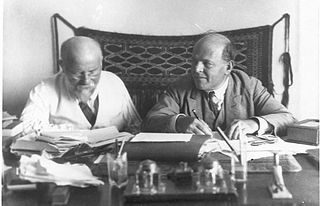
Sefer HaAggadah is a compilation of Aggadot that was compiled and edited by Hayim Nahman Bialik and Yehoshua Hana Rawnitzki starting from 1903. Most of the sources included in Sefer HaAggadah come from the period of the Tannaim and the Amoraim. Bialik and Ravnitzky include aggadot from the Mishnah, the Babylonian Talmud, Jerusalem Talmud, Avot of Rabbi Natan, Mekhilta, Sifra, Sifre, Tosefta, Midrash Rabba, Midrash Tanhuma, Pirke De-Rabbi Eliezer, Sefer Yetzirah, Yalkut Shimoni, Alphabet of Sirach and others. Nahum Norbert Glatzer, Jewish literary scholar, theologian, and editor writes that Bialik's goal in compiling the Sefer HaAggadah was "…part of his attempt to popularize Hebrew classics." This mission is very much evident in Bialik's essay, Halakah and Aggadah where he expands on the roles of Halakah and Aggadah in reinventing or renewing a society's culture.










